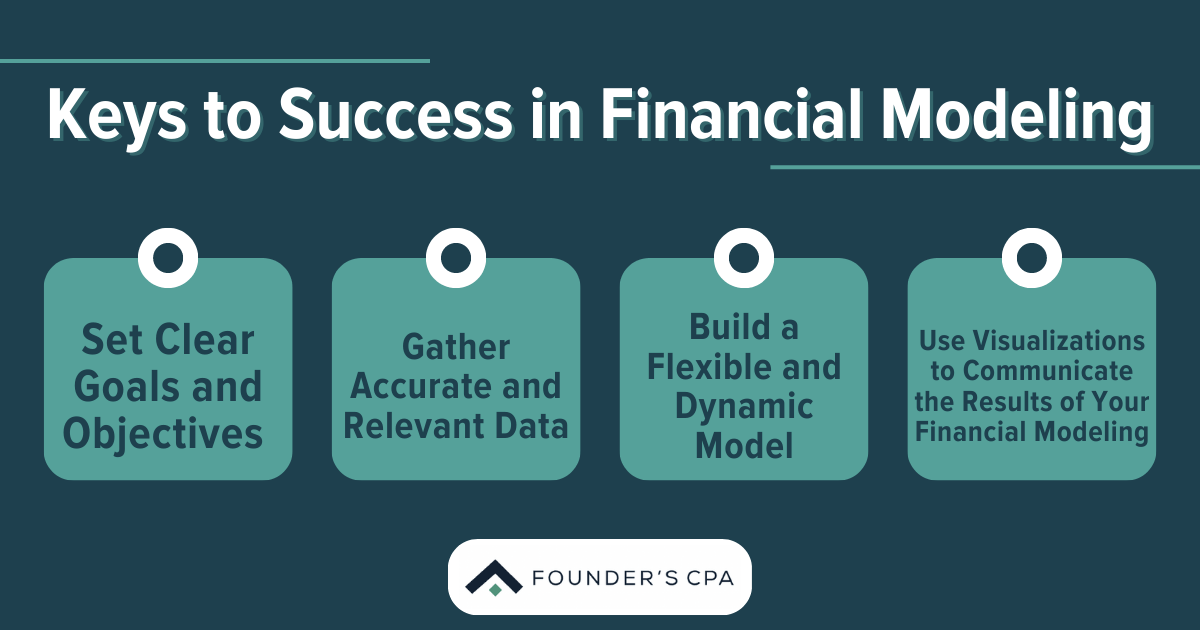Financial modeling might be the most valuable tool for startup founders and investors to test assumptions, make decisions and evaluate potential outcomes.
Modeling gives founders insight into how their businesses will perform if their assumptions are accurate. And it can help investors understand whether or not a company might be a good investment.
But many founders overlook a fundamental truth about financial modeling. The goal is NOT perfection; no model can predict uncertain outcomes with 100% accuracy. The only sure thing about a model is that it’s guaranteed to be wrong. Once you accept that mindset, you can move on to the true purpose of financial modeling.
The actual goal is to minimize ambiguity and enable better decision-making. A target of around 85% precision is a worthy objective, and the remaining 15% isn’t worth the trouble.

Keys to Success in Financial Modeling
Financial modeling success means balancing precision and practicality to create models that deliver actionable insights for your business.
Set Clear Goals and Objectives
While it can be tempting to focus on getting the numbers right when first learning to create an economic model, it pays to start at the beginning. But before building a model, understand that defining clear and measurable goals sets you up for financial modeling success.
In other words, financial modeling is a way to test your hypotheses about the economic future of your business. To use models effectively, you must set clear objectives defining what you hope your model will accomplish.
For example, imagine you’re considering introducing a new product. Making a model that can help determine under which conditions the product is likely profitable should be one of your primary objectives.
But that’s not all. Modeling also requires you to identify and prioritize your goals and objectives. Your new product could be profitable, but only if you can fund a massive investment upfront. While profitability is important, maintaining positive cash flow may be a higher priority.
Gather Accurate and Relevant Data
Once you understand the problem you’d like your business financial model to solve, it’s time to collect accurate and relevant data to serve as a solid foundation for your model. Although your model will never be 100% precise, higher-quality inputs will deliver more reliable outputs.
There are three main ways to gather data:
- Existing historical data – This approach works well when building a baseline forecast or evaluating a company’s current state. It requires you to have access to relevant data.
- Projections of future performance – This involves extrapolating information from your existing financial models and can be helpful for new products or projects that haven’t yet started generating revenue.
- Publicly available information – No company operates in a vacuum. Savvy business decisions require an assessment of market forces and competitors. This information can come from public databases, annual reports, purchased marketing data, and many other sources.
Your assumptions will be pivotal in the conclusions and insight your model generates. Ensuring they are reasonable and justifiable will enhance your trust in the scenarios you model.
Build a Flexible and Dynamic Model
The world is constantly changing. You should create your financial model in ways that allow you to adapt it to maturing internal assumptions and evolving external forces.
A fixed and static model will require you to spend more time creating new versions, while a flexible financial model that you can quickly update without starting from scratch each time.
For example, include multiple scenarios in each calculation to see what happens if certain factors change (for example, if sales growth is higher than expected or expenses are lower than expected).
You can accomplish this via a spreadsheet or dedicated modeling software. With a spreadsheet, use simple formulas wherever possible, allow for multiple scenarios, and keep your inputs in as few places as possible, i.e., one dedicated input sheet. A modeling software should contain those features and be relatively simple to use.
Use Visualizations to Communicate the Results of Your Financial Modeling
Although numbers are the backbone of your financial modeling, visualizations will clarify your message. An excellent visual representation will help your readers and team members understand the critical components of your model, how they interact with each other, and the message behind the data.
Start by creating a simple chart or graph that shows key metrics such as revenues or profits over time. Then use your financial model to calculate and report what happens to those metrics when introducing new information. For example, adding new products or doubling your marketing spend might create an initial cost bump followed by significant additional revenue and profit.
Creating compelling and clear visualizations can be simple if you follow these best practices for modeling, charts, and graphs:
- Use visualizations to communicate the results of your financial modeling
- Provide recommendations that match the story of the visualization
- Focus on the key metrics and forecasting periods
- Maintain consistent formatting in your spreadsheets

Need Help with Financial Modeling?
Financial modeling isn’t always easy, but it can be simple. You can confidently take on your most significant objectives with clear goals, reliable data, flexible but logical structures, and the understanding that there is no perfect model.
There’s no reason to go it alone. Building an insightful financial model that works for you and your business can bring tremendous value with the right team on your side. Contact Founder’s CPA today to see how our team of experts can help you get started with financial models for data-driven decisions.
May 10, 2023 2:51:00 PM